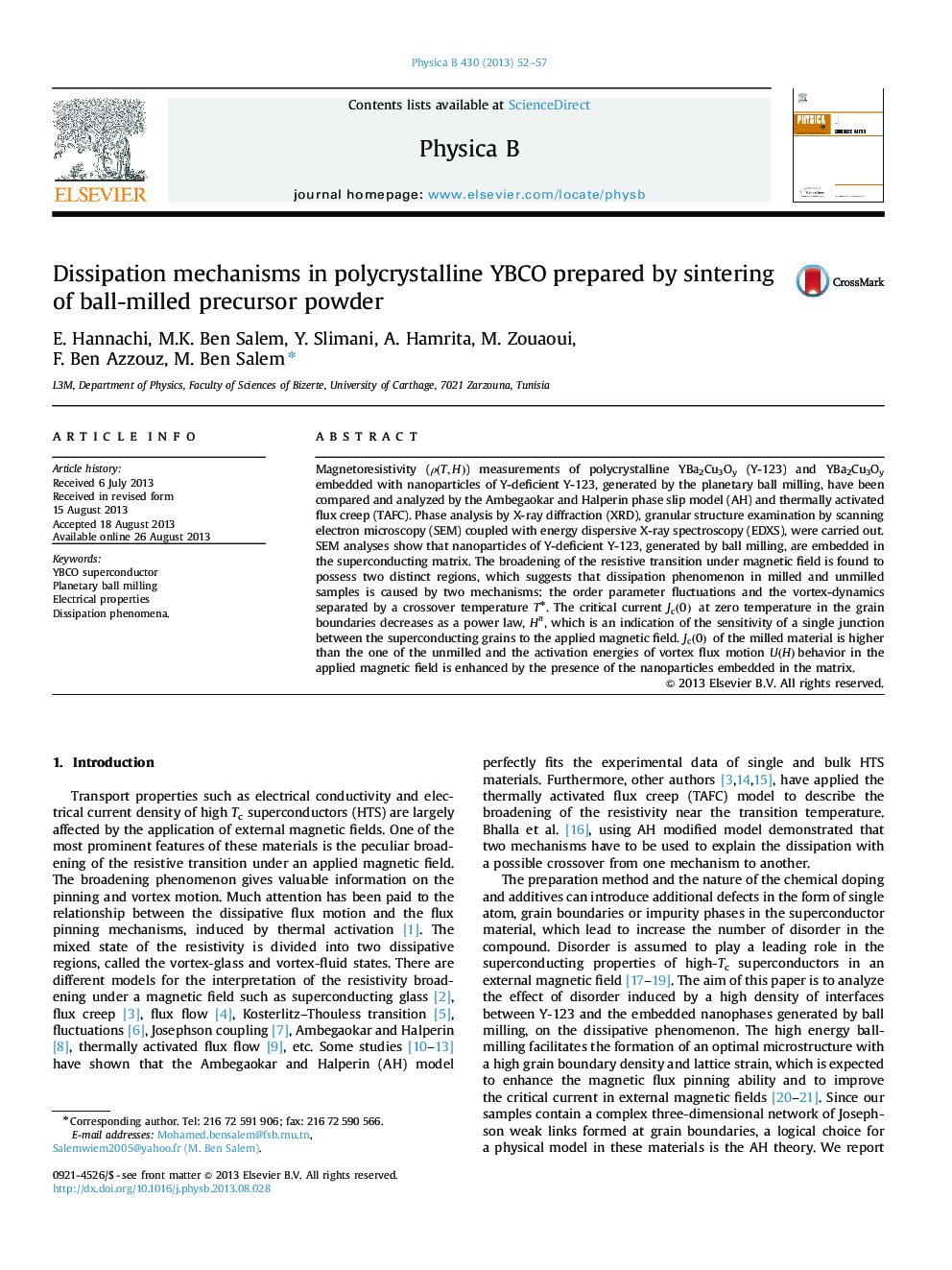| Article ID | Journal | Published Year | Pages | File Type |
|---|---|---|---|---|
| 1809765 | Physica B: Condensed Matter | 2013 | 6 Pages |
Magnetoresistivity (ρ(T,H)ρ(T,H)) measurements of polycrystalline YBa2Cu3Oy (Y-123) and YBa2Cu3Oy embedded with nanoparticles of Y-deficient Y-123, generated by the planetary ball milling, have been compared and analyzed by the Ambegaokar and Halperin phase slip model (AH) and thermally activated flux creep (TAFC). Phase analysis by X-ray diffraction (XRD), granular structure examination by scanning electron microscopy (SEM) coupled with energy dispersive X-ray spectroscopy (EDXS), were carried out. SEM analyses show that nanoparticles of Y-deficient Y-123, generated by ball milling, are embedded in the superconducting matrix. The broadening of the resistive transition under magnetic field is found to possess two distinct regions, which suggests that dissipation phenomenon in milled and unmilled samples is caused by two mechanisms: the order parameter fluctuations and the vortex-dynamics separated by a crossover temperature T⁎T⁎. The critical current Jc(0) at zero temperature in the grain boundaries decreases as a power law, nHHn, which is an indication of the sensitivity of a single junction between the superconducting grains to the applied magnetic field. Jc(0) of the milled material is higher than the one of the unmilled and the activation energies of vortex flux motion U(H)behavior in the applied magnetic field is enhanced by the presence of the nanoparticles embedded in the matrix.
